Ground Cover Plants That Will Thrive in Your Arizona Garden
Building an outdoor living space where you can enjoy time with friends and family is a rewarding experience. Whether you’re building a patio, a deck, or an entertainment area — adding ground cover plants/planters can bring people together. Good ground cover plants also help add personality to your outdoor living space. Here are some ground cover plants that are best suited for Arizona.
1. Yellow Bells
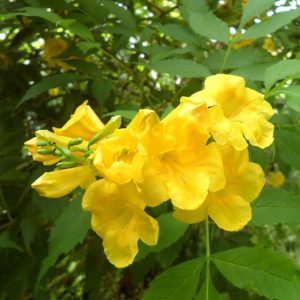
Yellow bells make excellent ground cover plants in Arizona. They are easy to maintain and thrive in the heat. They are a perennial plant that likes full sun and well-drained soil.
It grows best in the spring or early fall when the weather is warm but not too hot. If you plant yellow bells in the summer, they might not have time to establish themselves before winter kills off any new growth.
It prefers dry conditions over wet ones. Hence, it would help if you watered them throughout the growing season instead of letting them sit in water for too long. Your yellow bells will stay strong and healthy all year long if you do this.
2. Rock Rose
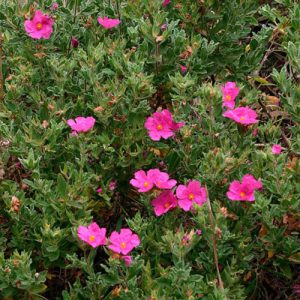
It’s one of the most popular plants for people looking for a low-maintenance flower that will bloom all summer long. Rock rose grows best in full sun but can tolerate partial shade. It prefers well-drained soil and needs little water once it’s established. The flowers are pinkish-purple and fragrant—they’re often used in potpourri because of their strong scent.
The leaves of rock rose to tend to be green in cooler weather and turn red-orange during warm months. This plant is often used as an edging plant because it stays low to the ground and doesn’t spread very far outward into your lawn or garden bed.
Rock rose is hardy and resistant to pests like rabbits and deer; it also works well as a border around other plants such as roses or perennials. However, it can take some foot traffic so long as you don’t walk on top of the flowers themselves (which will crush them).
3. Arizona Fuchsia
Arizona Fuchsia is an excellent ground cover plant because it’s drought-tolerant and blooms all year round. In addition, this plant is native to Arizona, so that it will feel right at home in your yard. You can even use it as an addition to other plants to give them a boost.
It does best in full sun or partial shade, but it will tolerate all kinds of soil types, including clay, rocky soil, or sand. It’s also drought-tolerant, so this is an excellent choice if you have a desert landscape.
The Arizona Fuchsia will go dormant in the fall and winter and stop blooming until springtime. Then, it will start growing and flowering again in springtime until late autumn, when it goes dormant again until the next springtime begins.
4. Creeping Mahonia
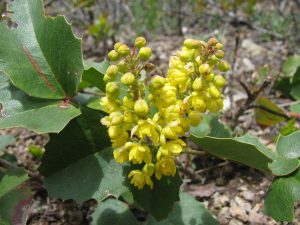
This plant is a low-growing, evergreen shrub that grows about 5 feet tall. It loves the sun and thrives in hot, dry environments like Arizona’s. It can also handle cold temperatures pretty well, so if you’re looking for a plant that will keep your yard alive through the winter months, this might be the one for you.
Creeping mahonia has beautiful deep green foliage in the summer and turns a lovely red color in fall. As well as its attractive appearance, it also makes an excellent ground cover due to its ability to crowd out weeds and grasses. It’s perfect for erosion control, slopes, poor soil, and full sun to partial shade.
5. Purple Velvet Plant
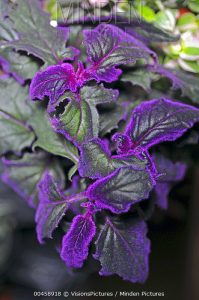
This perennial plant grows in U.S. Department of Agriculture zones 9 through 12. It has dark green leaves, and white flowers bloom from spring to fall. To develop this plant, you’ll need full sun and well-drained soil kept moist during the growing season.
The purple velvet plant can be invasive in warm climates, so it’s best to plant it in an area that won’t spread. Use a barrier such as stone or mulch outside your planting bed to keep it contained.
You might want to consider this cover plant if you attract bees and butterflies to your yard or garden.
6. Blue Daze
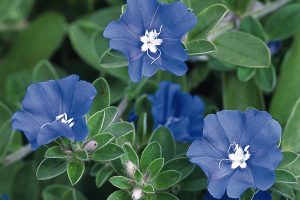
Blue daze is a beautiful perennial that works well in any climate, but it’s especially well-suited to the desert heat of Arizona. It doesn’t like water, so it often grows best in full sun. It’s perfect for the desert gardener who doesn’t have much time or water to spare.
The flowers are small, blueish purple blooms that grow on top of long stems above a clump of leaves 1-2 inches long. These flowers bloom throughout the summer and go dormant during winter, so you’ll enjoy them all year round!
7. Dwarf Passion Flower Vine
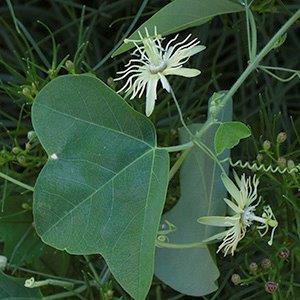
This beautiful vine is a perennial, meaning it will grow in your yard yearly. The dwarf passion flower vine produces small, pinkish-purple flowers that bloom in the spring. Round, yellow fruits follow the flowers, attracting birds and other wildlife.
Dwarf passion flower vines grow best in full sun and well-drained soil. They can thrive in temperatures as high as 95 degrees Fahrenheit (35 Celsius) with little water or humidity. Dwarf passion flower vines are easy to care for and need little maintenance to thrive in your yard.
8. Bearberry
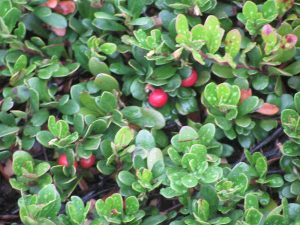
Bearberry is a small shrub that grows in USDA zones 2-8, so it can be produced in most of Arizona. It’s a great little plant to use as a ground cover because it’s low-maintenance, making it easy to grow even if you don’t have much time. In addition, Bearberry is deer-resistant, perfect for people who want to keep their landscaping looking nice but don’t want to spend money on chemicals to keep the deer away from their plants.
It has pink flowers that turn into red berries. These berries are edible and can be used in jams and jellies, but they taste best when baked into pies or made into jams.
It thrives in moist soil and can grow up to 4 feet tall. It grows best in full sun but will tolerate partial shade. The plant does best when planted in soil that drains well and is high in organic matter. Bearberry should be watered while it is establishing itself. You can water it less often if your climate is dry enough not to need irrigation; every two weeks should be enough.
9. Ice Plant

It is a low-maintenance ground cover that thrives in arid, sunny areas. It grows well and spreads, providing you with a lush green carpet of color that you can use to soften the harshness of an Arizona landscape.
The plant is also known as an ice plant because it looks like tiny ice cubes when watered. This unique feature makes it more attractive than many other ground cover plants.
It does not need much care or attention, so you can focus on other things while this hardy plant takes over your yard.
10. Star Jasmine
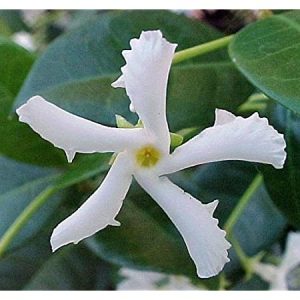
You can plant this ground cover from seedlings or cuttings rather than purchasing an established plant from a nursery or grocery store if you prefer to start from scratch.
It is one of the best ground cover plants to grow in Arizona. It has a low-maintenance, drought-tolerant nature that makes it ideal for dry and shady spots.
Star jasmine’s star-shaped flowers are white or pale pink and bloom throughout the year. The plant proliferates, but you can keep it in check by trimming its stems.
The most important thing to know about growing star jasmine is where you want to put it: it needs full sun, so if your spot gets shade, look for another plant. Additionally, ensure the soil is well drained and rich with organic matter.
Tips for Planting
Here are some tips for planting ground cover plants in Arizona:
• Plant your seeds early in the season. Later in the season, the sun will be too hot for them to germinate.
• Consider purchasing seedlings from a nursery instead of starting with seeds. This way, you can be sure that your plants are healthy and ready to grow immediately!
• Don’t forget about watering! You’ll need plenty of water if you want your ground cover plants to thrive. Be sure not to overwater them, though—too much water will cause them to rot away.
• Choose the correct type of plant for the area where you want to grow it. You can divide ground covers into two categories: evergreen or deciduous. Evergreen plants keep their leaves year-round, while deciduous plants lose their leaves during winter.
• Selecting the right soil mix is essential when growing any plant, but it’s necessary when growing ground cover plants because they need nutrient-rich soil that drains well. A mixture of equal parts sand and compost will give your ground covers the nutrients they need without becoming waterlogged.
• Planting too close together can cause some types of ground covers to crowd out other styles of ground covers, so make sure you know what kind of growth pattern each type has before planting them together.
•
Caring Tips for Growing Ground Cover Plants in Arizona
Arizona is a warm, dry state perfect for growing ground cover plants. These plants help to keep your soil healthy and also reduce erosion. If you are looking for a way to improve the quality of your soil and add beauty to your yard, then planting ground cover plants may be what you need. Here are some tips for caring for these plants:
• Watering: Ground cover plants do not need as much water as other plants because they grow close to the ground where there is more moisture in the soil. If their roots become too moist, they can rot and die, so it’s important not to let them sit in water at any time during the year.
• Fertilizing: Ground cover plants don’t need much food, so you don’t need to fertilize them, but if you feel like it would be beneficial, then, by all means, fertilize them! Overdoing it can cause problems, such as burning leaves or roots, killing them off if left untreated.
• Choose the right plant. You can choose any ground cover plant that will thrive in your area.
• Make sure the soil is moist before planting. To test this, stick your finger into the ground about an inch down from the surface. If it feels wet, it’s good to go! If not, wait until it does before planting your new plant.
• Choose a sunny location for your plant. You keep it healthy and strong throughout its life cycle (5-10 years with proper care).
• Water once established so that weeds don’t take over your space.
Take away: These Plants Are Great Drought Tolerant Ground Cover Plants for the Hot Sun in Arizona
They can handle shade and sun, making them a good choice if your yard doesn’t get much natural light. Also, due to the low rainfall in the desert, these plants thrive without much water. They’re also good choices to add low maintenance to your landscape design as they don’t need much pruning or other care like some different types of shrubs.
Finding the perfect ground cover plant for your yard is difficult, but it can be satisfying when you do. When you start looking for new plants for your backyard, consider the ones that have weathered heat well in other parts of the country, and then try them out in your climate.
